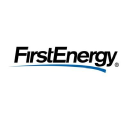/ factorpad.com / stocks / f54dmb.html
An ad-free and cookie-free website.
Our quantitative data points are meant to provide a high-level understanding of factors in equity risk models for Firstenergy Corp. Portfolio managers use these models to forecast risk, optimize portfolios and review performance.
We show how FE stock compares to 2,000+ US-based stocks, and to peers in the Utilities sector and Nuclear Electric Power Generation industry.
Please do not consider this data as investment advice. Data is downloaded from sources we deem reliable, but errors may occur.
 FirstEnergy Corp. is dedicated to safety, reliability and operational excellence. Its ten electric distribution companies form one of the nation's largest investor-owned electric systems, serving customers in Ohio, Pennsylvania, New Jersey, West Virginia, Maryland and New York. The company's transmission subsidiaries operate approximately 24,500 miles of transmission lines that connect the Midwest and Mid-Atlantic regions.
FirstEnergy Corp. is dedicated to safety, reliability and operational excellence. Its ten electric distribution companies form one of the nation's largest investor-owned electric systems, serving customers in Ohio, Pennsylvania, New Jersey, West Virginia, Maryland and New York. The company's transmission subsidiaries operate approximately 24,500 miles of transmission lines that connect the Midwest and Mid-Atlantic regions.
Many of the following risk metrics are standardized and transformed into quantitative factors in institutional-level risk models.
Rankings below represent percentiles from 1 to 100, with 1 being the lowest rating of risk.
Stocks with higher beta exhibit higher sensitivity to the ups and downs in the market. (↑↑)
Stocks with higher market capitalization often have lower risk. (↑↓)
Higher average daily dollar volume over the past 30 days implies lower liquidity risk. (↑↓)
Higher price momentum stocks, aka recent winners, equate to lower risk for many investors. (↑↓)
Style risk factors often include measures of profitability and payout levels.
Companies with higher earnings generally provide lower risk. (↑↓)
Companies with higher dividend yields, if sustaintable, are perceived to have lower risk. (↑↓)
/ factorpad.com / stocks / f54dmb.html
A newly-updated free resource. Connect and refer a friend today.